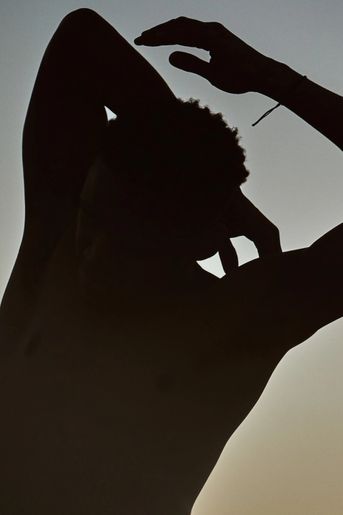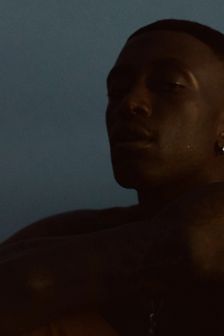The Codes of Conduct
From slave codes to “running while Black,” social contracts have normalized brutality against Black Americans and reinforced a culture of violence for hundreds of years. Let’s decode the playbook of bias.

On February 23, 2020, a 25-year-old runner put on his tennis shoes and went out for some fresh air and routine exercise in his neighborhood. His workout fatally concluded in a depraved race for his life. He was assaulted and killed by a retired police officer and his son shortly after a prejudiced 911 call was made falsely alleging he could be a burglar.
His name was Ahmaud Arbery.
How is it that a Black man running remains a trigger for violence 400 years later? The only exception? When it’s on a court, field, or a track.
The answer is deeply rooted in America’s social norms.
Social norms are informal rules that govern behavior in groups and societies. They are loosely made up of beliefs, expectations, and common knowledge to influence behavior, without an enforcer present. An innocuous example is standing on the right side of an escalator when leaving the subway so you don’t block riders that prefer to walk.
When social norms are weaponized, they are exceptional at targeting and brutalizing minority groups. For example, consider how separate water fountains and bathrooms for white and Black people had been normalized during the Jim Crow era. Or why a neighbor would feel comfortable enough to call the cops on a Black man jogging in a primarily white neighborhood because it broke an unspoken norm.
In the case of policing, it was critical to maintain social control with a code of conduct that would dictate acceptable behavior at all times. Even when deputized enforcers weren’t present. These codes, paired with laws, pack a brutal punch.
1600s: slave codes
Slave patrols were tasked with arresting any enslaved person who breached the slave codes, which prevented the enslaved from:
- Assembling unless a white person was present
- Learning to read or write
- Getting married
- Leaving their owner's property without permission
The patrols were empowered to use violence whenever they spotted an “infraction.” A fair trial wasn’t an option.
1800s: BLACK CODES & JIM CROW LAWS
The Black codes, an evolution of slave codes, were designed to limit the freedom of Black Americans and erase their labor and voting rights. They ensured Black Americans would be a cheap labor force after the abolition of slavery left a massive gap in the workforce. They went hand in hand with Jim Crow Laws (local and state statutes that legalized segregation and stayed in effect until 1968.)
Here’s an example of a Black Code from Louisiana:
“Every negro is required to be in the regular service of some white person, or former owner, who shall be held responsible for the conduct of said negro. But said employer or former owner may permit said negro to hire his own time by special permission in writing, which permission shall not extend over seven days at any one time.”
—Saint Landry Parish, Lousiana, 1865
The most well-known Jim Crow Laws enforced segregation on buses, at water fountains, and within restrooms. Here’s are two more examples:
“It shall be unlawful for a negro and white person to play together or in company with each other in any game of cards or dice, dominoes or checkers.”
—Birmingham, Alabama, 1930
“Separate free schools shall be established for the education of children of African descent; and it shall be unlawful for any colored child to attend any white school, or any white child to attend a colored school.”
—Missouri, 1929
It was legal for police to use violence to protect Jim Crow laws and Black people were regularly attacked and killed by police and white mobs for minor infractions or even unproven accusations.

1900s-2000s: THE MODERN BLACK CODES
It’s easy for non-Black groups to think racial codes are archaic and that we’ve moved beyond this sort of social policing. Unfortunately, they still exist today and most Americans consciously or unconsciously follow or reinforce them. The Black community is acutely aware of them. In fact, the codes add an additional layer of cautious decision-making to every day innocuous actions that majority groups don’t need to consider.
Here are a few examples of everyday actions Black Americans have taken which have resulted in a police death sentence over the last 10 years.
- Standing outside own home (Kenneth Chamberlin, 2011)
- Seeking assistance after a car accident (Jonathan Farrell, 2013)
- Standing outside a store (Eric Garner, 2014)
- Playing with a toy gun in a field (Tamir Rice, 2014)
- Selling DVDs (Alton Sterling, 2016)
- Riding shotgun in a car (Jordan Edwards, 2017)
- Holding a cellphone (Stephon Clark, 2018)
- Sitting at home eating ice cream (Botham Jean, 2018)
- Playing video games (Atatiana Jefferson, 2018)
- Walking home (Elijah McCalin, 2019)
- Sleeping at home (Breonna Taylor, 2020)
- Sitting in a car (George Floyd, 2020)
In each of these instances, the victims were unarmed but still killed by the police. This list is just a small sampling. It also doesn’t reflect the sheer amount of unreported police harassment of Black Americans that happens every day.
41% of Black Americans
21% of Black Americans
Why are these situations mostly unreported? Because there’s no one to call when the police are the ones harassing and executing you.
New language has emerged for the noncrimes that have replaced the Black Codes: driving while black, sleeping while black, sitting in a coffee shop while black. All reflect incidents in which African-Americans were mistreated, assaulted or arrested for conduct that would be ignored if they were white.
Source: New York Times
For many Black people living in America, flashing lights in a rearview mirror is a death symbol.
A Moment of Reflection
In addition to our own perspectives, we collected a few stories of what it’s like to be Black in America across the country.
“I am always hyper-vigilant as to how I am being perceived when I walk outside as a 6'4 black man. I am conscious not to walk too close behind people and go out of my way to verbally and nonverbally announce my presence so I don't surprise folks.
I consider not wearing a dark color hoodie and always carry an umbrella so that I don't resort to using my hoodie if I have one when it rains. When I approach the building I live in I take out my keys early, especially if I am approaching the entrance at the same time as others.
When I walk into stores, I have my hands where people can see them at all times, even when I am carrying items. (I've been stopped several times in stores over the years for theft accusations.) And every time I see a cop car pass by me on the street, I decide whether to make eye contact or to look away. When I do make eye contact, I force myself to smile, even though my heart drops to the pit of my stomach every time.”
—“Q” from Oakland, California
If you’re white, imagine stepping into the reality Q shared above. Consider the sheer number of micro-decisions that must be made every day just so you can breathe.
Now think about the ingrained privilege being born white affords you. Have your rights typically been respected and protected by the police? Were you given second chances for breaking small laws like speeding or a broken tail light?
What will you stand for?

